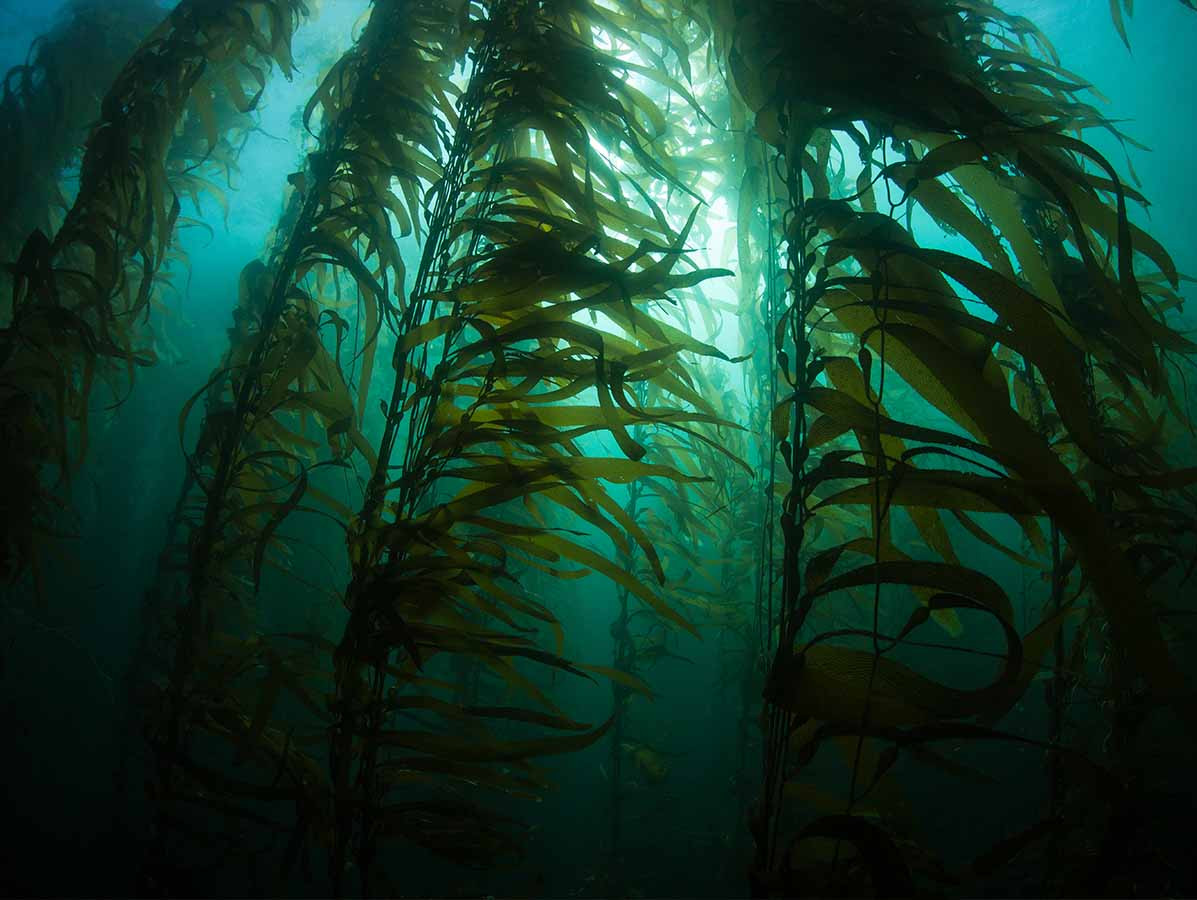
There are high expectations for the production of food at sea, but the opportunities are limited, even with the latest technological options such as ecological engineering, argues theoretical biologist Jaap van der Meer of Wageningen Marine Research.
We should perhaps be focusing less on the land and more on the sea. The oceans account for 70 per cent of the Earth’s surface but only supply one to two per cent of our food. This could be more, according to proponents of the ‘Blue Growth’ concept. For example, we could increase the efficiency of farming food in the sea. But unfortunately it isn’t that simple. The models that were used previously look at the available surface area for food production, but not the available nutrients or the composition of the marine food pyramid.
In terms of fertility, you can compare most of the ocean with a desert: on average there is a huge scarcity of nutrients. That is the main limitation of marine food production for human consumption. Another problem is that the first two levels of the food pyramid – the plants and herbivores – mainly consist of single-celled algae and plankton less than half a millimetre in size. We can’t harvest them.
Larger algae do exist, but you won’t find the large algae, seaweeds, in the open sea, only in a very narrow coastal zone. You could grow them in the open seas, but Van der Meer says that never took off properly. It’s expensive and technically difficult. Also, large seaweeds are difficult to harvest and they soon rot if you don’t dry them properly immediately.
Fertilisation is not an option, because that changes the composition of the algae. “Experience shows that this mainly benefits inedible species,” says Van der Meer. And because many of the nutrients that could be used to fertilise the coastal area mostly end up in the sea bed.
That is why we mainly rely on animals higher up the food pyramid, such as fish, for marine food. But all of them taken together make up a very small proportion of the food production at sea. With each step in that food chain, 94 per cent of the energy is lost; after four or five steps, not much is left. What is more, many of those fish populations are already overfished. And even if we were able to fish sustainably everywhere, the World Bank has calculated that the world’s oceans would produce at most 13 per cent more fish than now.
But what about the cultivation of fish such as salmon in enclosed pools in the sea? “Those salmon eat pellets that contain fish meal and fish oil – which also come from the sea,” Van der Meer answers. “And if you feed them soy, you are using resources that are already in short supply on land and which have their own associated problems. Salmon unfortunately don’t like algae. At most, you could design processes to extract proteins from seaweed and process them into pellets that salmon do like. But that also comes with limitations.”
In terms of mariculture, Van der Meer sees shellfish cultivation as the most promising option. Shellfish are low down the food chain and they are high-grade food. But there is limited space in coastal zones.
Van der Meer is investigating other options to get more food from the sea in collaboration with EFARO (European Fisheries and Aquaculture Research Organisations), at the request of the European Commission, for example by actively restoring depleted ecosystems such as oyster beds or fields of seagrass. Van der Meer: “We actually know very little about marine ecosystems, especially those in the deeper waters. And the estimates regarding the production of those systems vary widely. It would be dangerous to count on them for our food supply.”
Then there are the ideas about ‘ecological engineering’: interventions to give biodiversity a helping hand in certain places. “For example by building scaffolding to get a coral reef going, after which the reef will start expanding by itself,” Van der Meer says. “Or by placing structures on the sea bed that encourage upwelling, the upwards flow of nutrients. This would lead to more algae growth in the upper regions of the sea, as a basis for more production in the rest of the food pyramid.” In general, EFARO has doubts about the potential of ecological engineering. It remains to be seen whether it’s going to produce any significant results.
Should the Blue Growth idea just be ditched completely? That would be going too far, says Van der Meer. Coastal seas that have room for additional farming of seaweeds or shellfish do exist, for example the China Sea, where many places have a nutrient surplus. And there are also opportunities for small-scale farming in the North Sea.
Source: Wageningen University & Research